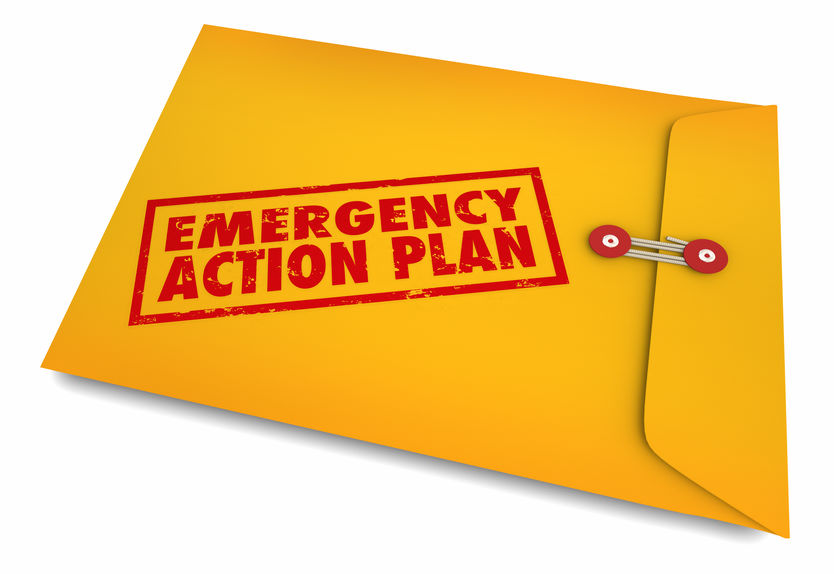As a Ready Rating member, you already know how you will act in a crisis. But do you know what to expect from other community members, especially your local government officials and first responders?
Detailed information on their plans is readily available. Nearly every town and city, not to mention county, tribal, and state government, publish their emergency response plans online. To access this material, enter the name of your locale along with the term “multi-hazard mitigation plan” (e.g. New York City Multi-hazard Mitigation Plan) into any popular search engine. Follow the links and read about possible road closings, shelter locations, and evacuation routes which will be set up in response to various types of hazards.
The hazards identified by local government are likely to differ from those you have identified. Most will be either naturally occurring (e.g., tornadoes) or the immediate consequence of a natural disaster (e.g., levee failure).
There are exceptions. For example, twenty states list the unauthorized release of radioactive material as a significant community concern, five list civil disturbances as an ongoing risk, and two highlight the danger of airplane crashes.
A survey of the hazard plans of the fifty sates shows the following to be local officials’ top five hazards:
- Flood Hazards. This is the most commonly cited hazard. It appears in the plans of all 50 states.
- Earthquake Damage. Appears in the plans of forty-two states.
- Drought. Cited by forty-one states as a topic of concern meriting mitigation efforts.
- Wildfires. Noted by forty states and the subject of discussion and land-use legislation.
- Winter Storms. Forty states single out the danger of prolonged and severe winter storms.
Knowing what hazards are worrying local officials and how they plan to cope with various emergencies can help you fine-tune your emergency response plan.
The format of these plans is similar. This is because most agencies use a template supplied by the Federal Emergency Management Agency (FEMA). It details how to conduct a risk assessment, evaluate community vulnerabilities, and points to resources on hazard mitigation and control. All this information is publicly available and local emergency managers indicate that they would be delighted to have private businesses review and comment on plans and strategies.
The Stafford Act
The motivation to develop these plans and follow a common outline comes from a law passed by Congress in 1988 known as the Stafford Act. During a crisis, this legislation empowers FEMA to coordinate the actions of twenty-eight government agencies and some non-governmental organizations such as the Red Cross. The Act provides for federal assistance, both financial and physical, once a crisis is judged severe enough to warrant a presidential disaster declaration.
The Disaster Mitigation Act of 2000 and the Pets Evacuation and Transportation Standards Act (2006) further amended this legislation and put FEMA firmly in charge of widescale emergency preparedness and response.
In order to qualify for federal assistance in a crisis, the Stafford Act requires local governments to develop a written hazard mitigation plan that addresses all the topics outlined in the FEMA hazard plan template. This plan must be submitted for review and approval by FEMA. Without this approval, even in the face of a presidential declaration, federal resources may be withheld.
Public-Private Collaboration
The Stafford Act encourages tighter public – private sector coordination including the involvement of local businesses in the development of these plans. Local business can use the knowledge gained from these discussions to fine-tune their own response strategies.
Much of the value of a hazard mitigation planning comes from the proactive steps taken beforehand to reduce the impact of a disaster. Discussion of land-use plans, floodplain management strategies, and zoning guidelines allows both government and businesses to make informed decisions while promoting community resiliency.
Other Resources, Tools, and Guidance
In addition to an online version of their hazard mitigation plan, most local government websites provide links to other useful resources.
This is certainly true of the FEMA website (www.fema.gov), which offers a wide range of tools and training programs. For example, the FEMA run Emergency Management Institute (https://training.fema.gov/is/) offers both face-to-face and online courses (many of which are free) covering a wide range of crisis and disaster related topics.
Resources to help communities and businesses plan for various hazards can be found at: www.fema.gov/hazard-mitigation-planning-resources.
A guide to hazard control rules and regulations can be found at: https://www.fema.gov/hazard-mitigation-planning-laws-regulations-policies.
Avoiding Surprises
Understanding what steps your local officials will take in a hazard not only enhances your response but aids your community. If your operation can move forward in a knowledgeable manner during a crisis you reduce the resource drain on your first responders and contribute to overall community resiliency.
As a Ready Rating Member Organization, make a review of your local community’s response plan part of your annual plan review.
Surprises are best left for celebrations, not emergencies.



